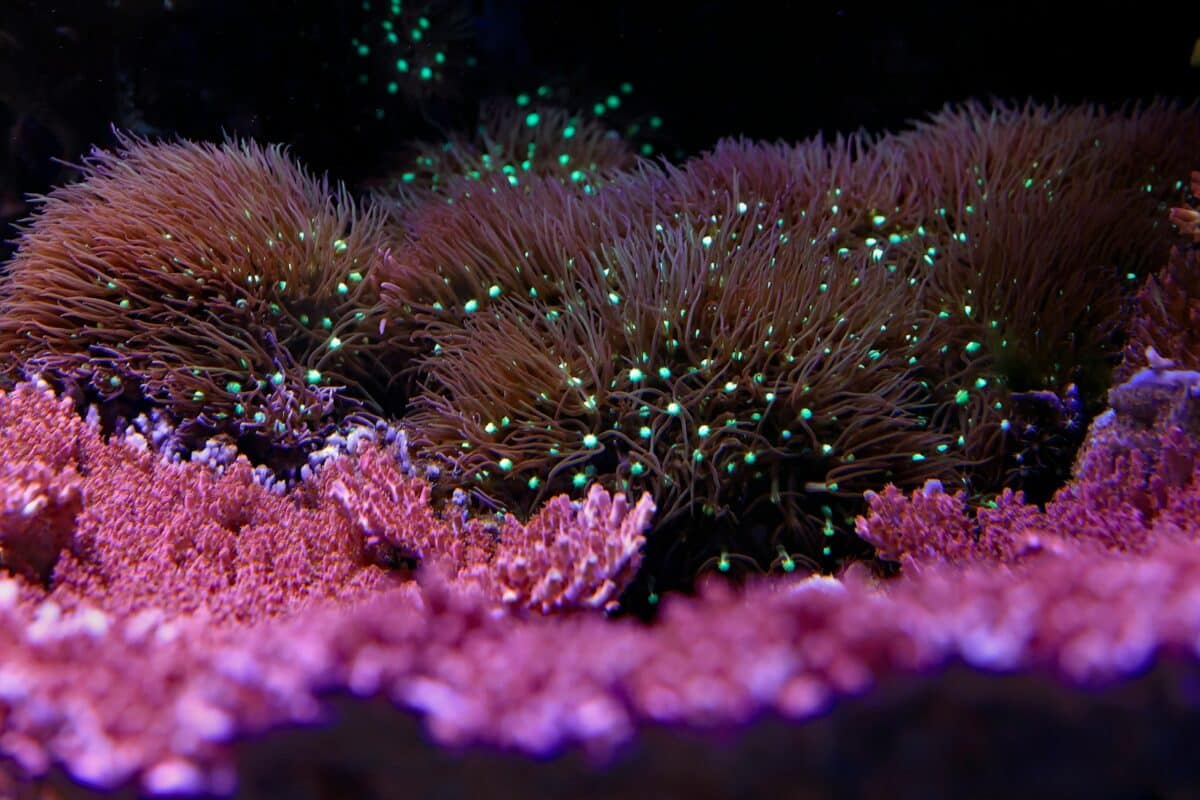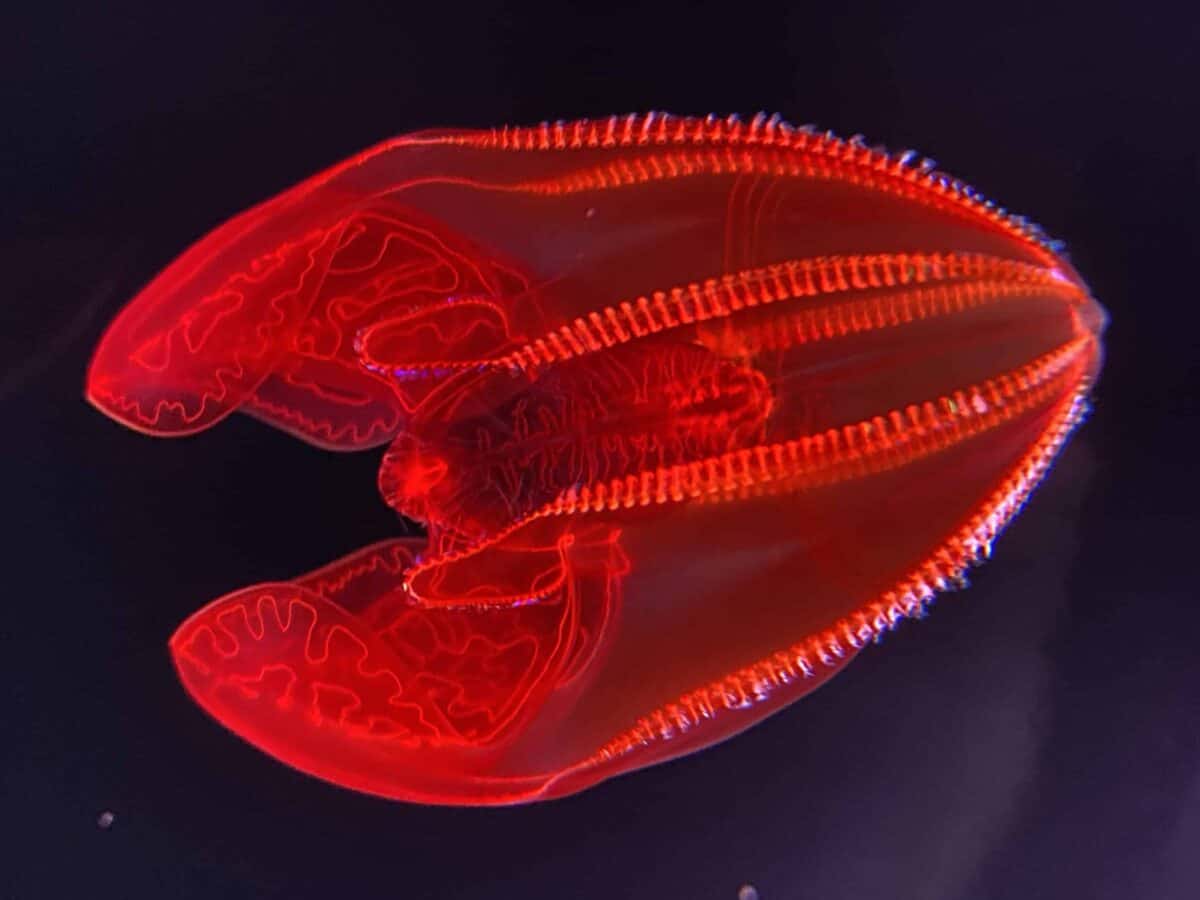The underwater world off Florida’s coast is a realm of mystery and enchantment. Here, amidst the swaying corals and teeming aquatic life, certain species possess an extraordinary feature: the ability to glow in the dark. This fascinating phenomenon, known as bioluminescence, captures the imagination with its otherworldly beauty. This article explores these luminous sea creatures, examining their captivating nature, the science behind their glow, and the important roles they play in the marine ecosystem.
What is Bioluminescence

Bioluminescence is the natural emission of light by living organisms. This phenomenon occurs due to a chemical reaction within the organism, typically involving the molecule luciferin and the enzyme luciferase. When combined with oxygen, these components produce a glow. This ability is not only found in marine creatures but also in some terrestrial organisms like fireflies and certain fungi. In the watery depths off Florida’s coast, bioluminescence creates a dazzling light show, enchanting those who venture into the night waters.
The Mysterious World of Glowing Plankton

The waters around Florida are home to tiny, glowing organisms called plankton. These microorganisms, including dinoflagellates, often emit their bioluminescent glow when disturbed by movement in the water. When waves break or when aquatic animals swim through these glowing plankton, the water lights up with a surreal blue-green shimmer. This phenomenon is not only visually captivating but serves as a defense mechanism against predators, startling them with sudden bursts of light.
The Enigmatic Comb Jellies

Comb jellies, or ctenophores, grace Florida’s waters with their delicate beauty and bioluminescent capabilities. Unlike jellyfish, these creatures move through the water with the help of cilia, giving them a mesmerizing, propeller-like motion. As light refracts through their translucent bodies, comb jellies can create striking displays of light. Their luminescent glow is thought to confuse predators and attract potential prey.
Glowing Jellyfish of the Deep

While most jellyfish are known for their stinging tentacles, some species off Florida’s coast are renowned for their bioluminescent displays. These jellyfish use their glow to protect themselves or to lure prey into their tentacles. The unique combination of their transparency and periodic bursts of light creates a visual spectacle beneath the ocean’s surface.
Fluorescent Fish and Their Secret Language

Certain fish in the waters off Florida’s coast have evolved to display bioluminescence for communication. These fish use light to signal to each other, whether it be for mating rituals or schooling behavior. Their glowing patterns can confuse predators or aid in hunting by attracting smaller creatures to the light-source, ultimately ensuring the survival of the species.
The Role of Bioluminescence in Predator and Prey Dynamics

Bioluminescence is an essential aspect of the complex predator-prey dynamics in marine ecosystems. Predators may use light to lure prey, while prey can employ bioluminescence as a defense mechanism. Some creatures release glowing particles into the water to confuse predators, allowing for an evasive escape. This dynamic illustrates the adaptive significance of bioluminescence in the survival of marine species.
The Threats Facing Bioluminescent Creatures

Bioluminescent creatures, like many marine species, face a multitude of threats due to human and environmental factors. Pollution, climate change, and habitat destruction all pose significant risks to these luminous organisms. The balance of the ecosystems they inhabit depends heavily on their survival, highlighting the importance of conservation efforts to protect Florida’s unique marine biodiversity.
Ecosystem Contributions of Glowing Sea Creatures

Beyond their beauty, bioluminescent sea creatures play crucial roles in their ecosystems. They are integral to the food webs in which they participate, providing sustenance for larger creatures and helping to maintain the health of the marine environment. These organisms also contribute to the cycling of nutrients and the overall productivity of the ocean.
Scientific Exploration and Discovery

The study of bioluminescent organisms has provided scientists with valuable insights into biochemical processes and adaptations. By studying these organisms, researchers have developed applications in medical research and biotechnology, harnessing the bioluminescent reactions for innovative advancements. The ongoing exploration of these glowing creatures continues to reveal fascinating scientific discoveries.
The Impact of Bioluminescent Tourism

Florida’s bioluminescent waters have become popular tourist attractions, drawing visitors eager to witness this natural wonder. While this interest can boost local economies, it is crucial to manage human activity to prevent ecological damage. Responsible tourism practices ensure that people can appreciate these environments without negatively impacting the delicate ecosystems that support them.
Experiencing the Magic

For those wishing to witness the magical glow of bioluminescent creatures, guided tours and eco-friendly nighttime paddling adventures are available off Florida’s coast. These experiences provide an opportunity to learn about the unique characteristics of the marine environments while observing the captivating natural light shows created by the bioluminescent organisms.
The Future of Bioluminescent Marine Research

The future looks bright for the continued study of bioluminescent marine organisms. With advancements in technology and increased awareness of their ecological importance, scientists can further unravel the mysteries surrounding these creatures. Continued research ensures that we understand and appreciate the critical roles these organisms play in marine ecosystems, contributing to efforts to safeguard their future.
In conclusion, the glowing sea creatures off Florida’s coast are not just a wondrous spectacle but vital components of the marine ecosystem. By understanding bioluminescence, we gain insight into the complex interactions within the ocean. As we continue to unravel their mysteries through exploration and research, we are reminded of the importance of preserving these luminous denizens of the deep, ensuring that their ethereal light continues to grace Florida’s waters for generations to come.
- The Largest Bald Eagle Nest Ever Found in Washington State - August 24, 2025
- How Big Can Alabama’s Giant Water SnakesReally Get? - August 24, 2025
- Why Tennessee’s Copperheads Are So Hard to Spot - August 24, 2025

